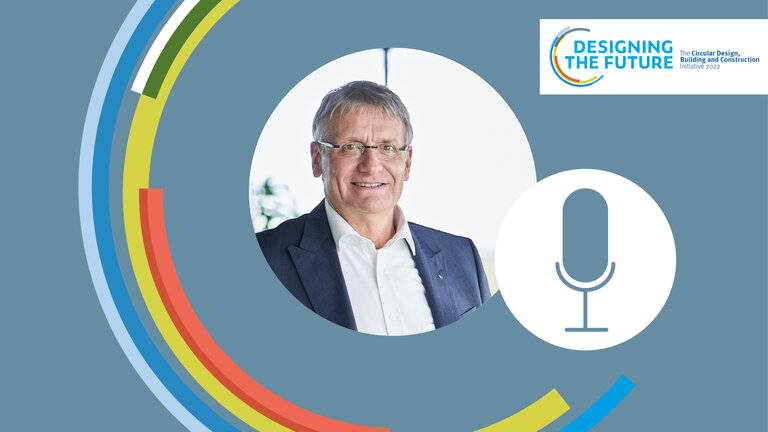To the point - three questions for Thomas Lauritzen, Group spokesman for Schüco International KG. As part of the Designing the Future initiative, we asked Mr Lauritzen for his opinion on the building of tomorrow.
Thomas Lauritzen has held various management positions at Schüco International KG since 1 January 1992. He is currently head of sustainability and the company's press spokesman.
"I would like to see even more good, cooperative partnerships than before. The will to really change something must not be missing in any process step of the value chain."
What are your expectations for tomorrow's building and what contribution can Schüco make to this?
Lauritzen: The building sector has at the same time a strong influence on sustainability as a global challenge of our time and a great responsibility in achieving global climate protection goals. Worldwide, buildings today cause almost 40 percent of total CO2 emissions. In Germany alone, the building sector consumes around 550 million tonnes of mineral raw materials every year and is also responsible for around 55 percent of the German waste produced - and the trend is rising. Sustainable building will automatically play a greater role in the future than it does today - namely through stricter legal requirements, as we can already observe in many European countries. Tomorrow's building must be lower in CO2 emissions and conserve resources. Schüco can make an important contribution here, for example through our recyclable and energy-efficient product solutions or through digital service offerings that simplify sustainable building for architects and planners.
How does Schüco specifically reconcile design quality and sustainability, for example in the materials used?
Lauritzen: At Schüco, we generally strive to take equal account of the criteria of design, quality and sustainability when developing our systems, and to bring them into harmony with each other. In practice, however, there are a few limitations, for example when it comes to combining sustainability and design. These two criteria can certainly influence each other. After all, we recognise a visual difference between recycled paper and normal paper. Such differences can become a quality feature if the customer attaches importance to sustainability.
How do you envisage ideal interaction between Schüco, architects and investors?
Lauritzen: In order to build more sustainably in the future, groundbreaking decisions must be made, especially at the beginning of the building process. Sustainability should always be thought of holistically and should never refer to only one part of the object or the building process. Currently, sustainability in buildings is often only measured in terms of the material, for example, the carbon footprint of the material used or its recycled content. This alone is an important lever for sustainable building, but significant decisions can be made even before this, for example about determining the form factor or the pure quantity of material to be used. Schüco can advise investors and architects here right from the start. The desire or aspiration to build sustainably and to make the necessary decisions to this end must already be present. This is often already the case, as we are currently seeing in the Scandinavian and British markets in particular.
HERE you will find more information on the Designing the Future initiative.
